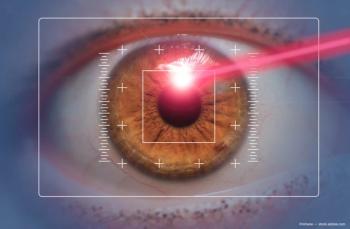
Use of CO-02 to stimulate the trigeminal nerve is a reasonable mechanism to help treat dry eyes
The study's primary endpoints were to look at increasing Schirmer's scores, as well as eye discomfort score.
"The take home message is that the use of the cholinergic agonists as a nasal spray to stimulate the trigeminal nerve is a reasonable mechanism to help treat dry eyes." - Bennie Jeng, MD
This transcript has been lightly edited for clarity.
The PEARL [phase] 2 study was looking at the compound OC-02 in treating dry eyes. This is a nasal spray that is used twice a day.
Their primary endpoints were to look at increasing Schirmer's, as well as eye discomfort score. By using this nasal spray twice a day, in four randomized groups — so three different concentrations of OC-02 versus placebo — they found that the Schirmer scores were significantly higher in the drug arms, especially the highest drug concentration. And the eye irritation score was also improved most with the highest concentration of the drug.
This molecule is very similar to the OC-01 molecule, which has been FDA approved and marketed. This particular molecule, because of OC-01 being on the market already, is not going to be licensed in the US for marketing.
The take home message is that the use of the cholinergic agonists as a nasal spray to stimulate the trigeminal nerve is a reasonable mechanism to help treat dry eyes. It's novel; it's different than putting eyedrops in your eyes. It may be beneficial for patients who have trouble putting eyedrops in their eyes. A lot of people are used to using nasal sprays for allergies, for example. And so this modality of treatment, as well as a new mechanism, may have extensive benefits for the patients.
Newsletter
Don’t miss out—get Ophthalmology Times updates on the latest clinical advancements and expert interviews, straight to your inbox.
















































.png)


